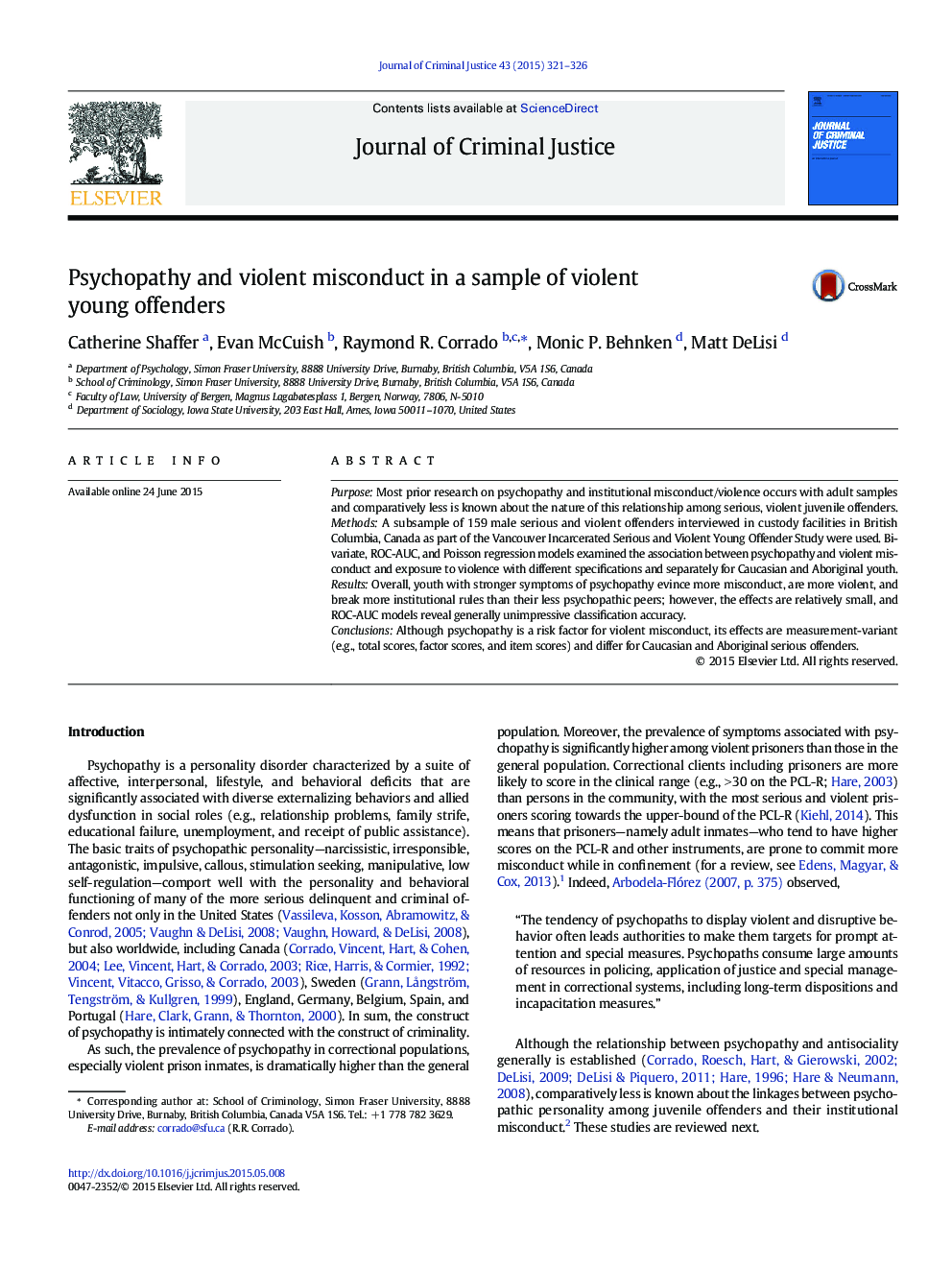| Article ID | Journal | Published Year | Pages | File Type |
|---|---|---|---|---|
| 882734 | Journal of Criminal Justice | 2015 | 6 Pages |
•The relationship between psychopathy and institutional violence was examined•PCL: YV items had poor predictive validity for violent misconduct extremity•Psychopathy was differentially associated with violent misconduct based on ethnicity•Psychopathy was differentially associated with violence exposure based on ethnicity
PurposeMost prior research on psychopathy and institutional misconduct/violence occurs with adult samples and comparatively less is known about the nature of this relationship among serious, violent juvenile offenders.MethodsA subsample of 159 male serious and violent offenders interviewed in custody facilities in British Columbia, Canada as part of the Vancouver Incarcerated Serious and Violent Young Offender Study were used. Bivariate, ROC-AUC, and Poisson regression models examined the association between psychopathy and violent misconduct and exposure to violence with different specifications and separately for Caucasian and Aboriginal youth.ResultsOverall, youth with stronger symptoms of psychopathy evince more misconduct, are more violent, and break more institutional rules than their less psychopathic peers; however, the effects are relatively small, and ROC-AUC models reveal generally unimpressive classification accuracy.ConclusionsAlthough psychopathy is a risk factor for violent misconduct, its effects are measurement-variant (e.g., total scores, factor scores, and item scores) and differ for Caucasian and Aboriginal serious offenders.
